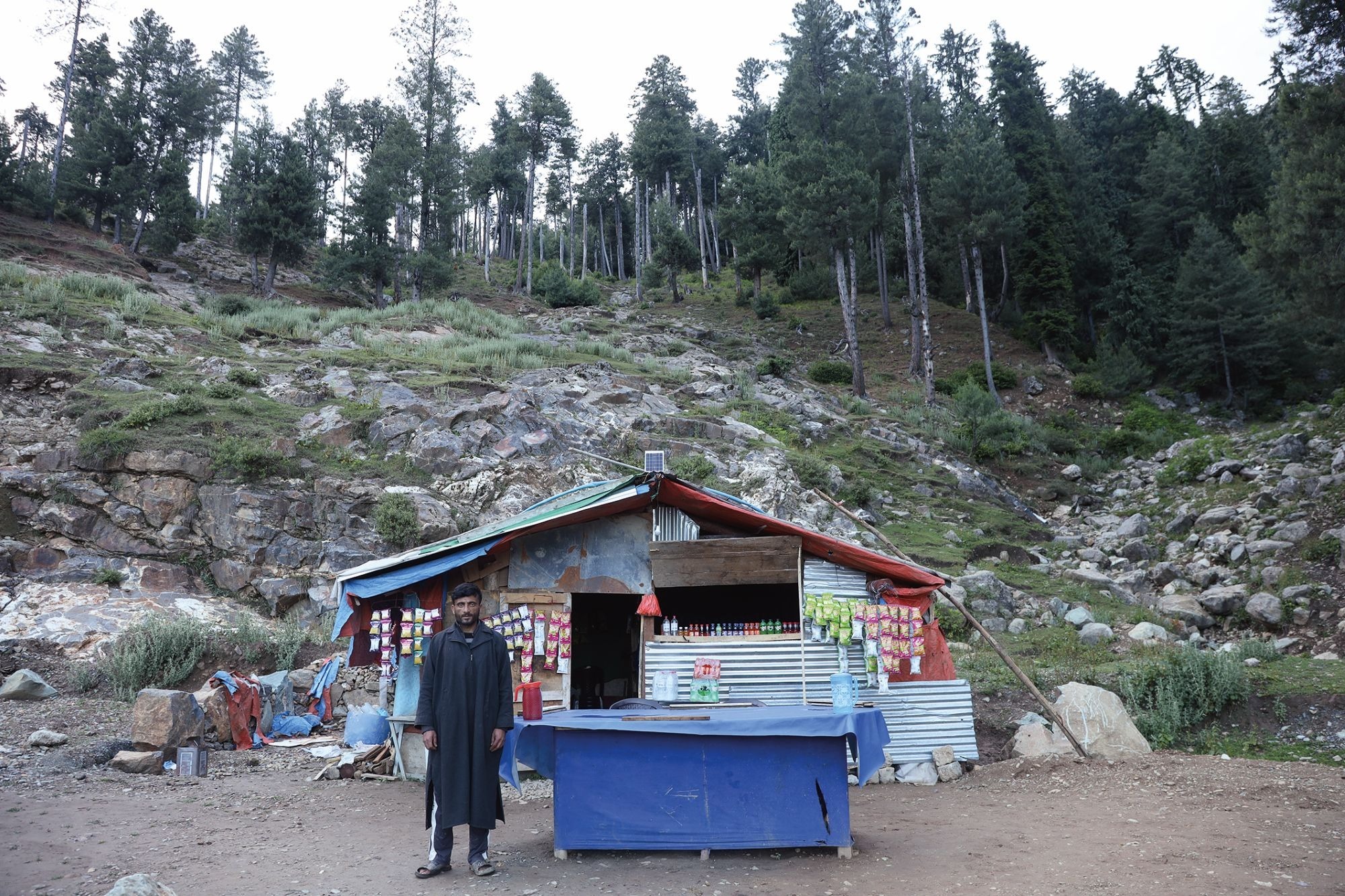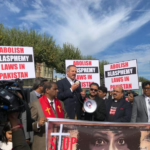The borderlands between India and Pakistan were a tourist paradise – but then the Pahalgam terror attack shattered the peace

On the side of a road that winds its way through the steep mountains, a plume of steam rises from a battered pot. Mushtaq Ahmad Khan, 42, strains boiling chai into small glass tumblers, sheltered by a faded tarpaulin. His hands move automatically – pour, strain, serve. He’s been doing this for a decade here in Indian-administered Kashmir, serving locals and tourists, many of them heading to and from Gurez, one of the most beautiful valleys in the Himalayas. Business used to be thriving. But then, on 22 April, a terror attack killed 25 tourists and a local pony rider in a Kashmiri resort, sending the tourism industry into meltdown. “Ever since the Pahalgam attack, tourists have stopped coming to Gurez,” Khan tells us, adding that he is the sole breadwinner in his family. “Before, I would earn about 1000 rupees a day [£8.50]. Now, it’s barely anything, just 50 rs [£0.40].”
It’s not only established businesses like Khan’s that have been affected. Many new ventures had opened up along the disputed border between India and Pakistan, encouraged by a government tourism campaign launched in 2023. Spearheaded by the Indian Army and local authorities, the initiative offered financial incentives and infrastructure upgrades to promote tourism in the areas along the “Line of Control”, which winds its way through the mountainous region of Kashmir. These scenic borderlands, previously only mentioned in discussions around security, were recast as sites of hospitality and resilience. Tourists were drawn by the snow-capped mountains, pristine lakes and apple orchards. In 2024, over 400,000 tourists came, primarily from across India and some from abroad.
But in Kashmir, walking the borderlands is not merely tracing lines on a map – it is stepping into a landscape shaped by decades of tension, teetering between the fragile hush of morning and the distant echo of war. The region has been a flashpoint since 1947, when British India was partitioned. Both India and Pakistan now claim full sovereignty over Kashmir, but control different portions, separated by the heavily militarised de facto border. Armed insurgencies, military crackdowns and shelling have defined life along this divide for generations, with families often forced to flee or rebuild in the shadow of conflict.
In the summer of 2019, the balance in the region shifted, as the Indian government revoked Article 370 of the constitution – a provision that had granted India’s portion of the region, the state of Jammu and Kashmir, special autonomous status. The move was controversial, not least because the special status of this Muslim-majority region had helped to balance its fraught relationship with the government, especially amid the rise of Hindu nationalism under Prime Minister Narendra Modi. In anticipation of unrest, the revocation was followed by a crackdown involving thousands of detentions and a communications blackout.
The government, for its part, presented the move as a step toward national integration and development, with tourism used as a key strategy. After the crackdown, residents were keen for economic recovery. And so those living in villages near the Line of Control began to repurpose their homes to accommodate guests. Many took out substantial loans. They hoped that the region, long defined by conflict, would soon be known for its hospitality and breathtaking landscapes.

For a time, it seemed to be working. But that fragile vision shattered on 22 April, when the hill station of Pahalgam – a jewel of the upper Himalayas – was hit by the deadliest attack on civilians in the region for decades. India blamed Pakistan-based militants and swiftly launched “Operation Sindoor,” targeting alleged militant sites in Pakistan-administered Kashmir. A familiar and devastating cycle began, as Pakistan retaliated with mortar fire and drone strikes. The shelling finally stopped on 10 May, after a ceasefire. But normal life has been slow to return. After the attack, Jammu and Kashmir shut down nearly half of its 87 tourist sites, mostly parks and gardens, and enhanced security at others. Some opened their doors again in June as part of a staged reopening plan – but there was no mention of tourist spots along the Line of Control. Families who had poured everything into the promise of peace now find themselves back in the same homes they had renovated for guests.
In the Gurez valley, the fallout has been especially severe. “Tourism had become the backbone of Gurez’s economy – almost every household was somehow connected to it,” says Ghulam Nabi Lone, who heads the local hotelier association. “Even young people who previously had no jobs had found work in this growing industry.” Gurez had seen nearly 20 hotels and over 50 homestays spring up in recent years – when we visited in June, all stood empty.
After Gurez, we visited Uri. Surrounded by rice fields, this tranquil town attracted tourists for its beauty, as well as to visit the Pandav Mandir, an ancient Hindu temple, and the Aman Setu, or “Bridge of Peace”. Once a strategic military outpost, the bridge was transformed into a symbol of reconciliation when it reopened as a crossing point between India and Pakistan in 2007. “In peak summer, over 5,000 people would visit daily,” says Tanveer Chalkoo, general secretary of Civil Society Uri. “Now shops are closed. Drivers, guides, everyone is sitting idle.”
Tourism is especially important for remote places like Tangdhar, a windswept border village in the Karnah Valley. Before the recent influx of tourists, Tangdhar was only ever in the news when guns began to thunder. But for locals like Nadeem Akbar, 42, it’s simply home. In 2021, Akbar poured two million rupees – half from a government loan and the rest from his personal savings – into building a hotel and restaurant. Before April, business boomed. “We’d serve nearly 250 meals [a day],” he recalls. “The rooms were almost always booked.” He was caught in the shelling on 6 May. Thankfully, all the guests had vacated the hotel so there were only two young staffers left. “They ran to my house next door,” he says. “Pakistan began firing around 2:30am. Not long after, a mortar hit the building – tearing a hole through the centre and cracking the surrounding walls, which later collapsed completely.”
Was border tourism a genuine attempt to revive life on the frontier – or a political showpiece for Modi’s government, one that recklessly ignored the region’s deep instability? A terror attack, or some other escalation of cross-border tensions, might have been predicted, given that the territory is still under dispute. The shelling has now reversed much of the progress made – through destruction of property, and also damage to the region’s reputation as a safe holiday destination.
Just days after the ceasefire was brokered, in a bid to restore confidence, the Indian government and the Travel Agents Association of India launched the “Chalo [Let’s go] Kashmir” campaign to revive tourism. But rebuilding businesses will plunge locals further into debt, and many are afraid that this is not the end of hostilities. In fact, it is not just tourists vacating the area. Many residents have fled the territory along the Line of Control and relocated further away from the de facto border.
When we visited, the region was preparing for an uncertain summer and autumn. In villages like Uri and Tangdhar, years of living with the fear of shelling have left people drained. Every time there’s talk of peace, they say, it’s followed by violence. Children miss school, families lose their homes and incomes, and the uncertainty seems to never end. While reporting this story, we felt that exhaustion firsthand – in the quiet pauses between conversations, in the way people looked away when asked about the future. There’s a heaviness in these villages that no politician’s visit can lift. But with little other option, some are considering whether to rebuild, come what may. Akbar tells us of his deep affection and pride for the hotel and restaurant, which had supported his family, as well as six employees. “This place wasn’t just a business,” he says. “It was our shared livelihood.”
This article is from New Humanist’s Autumn 2025 issue. Subscribe now.

